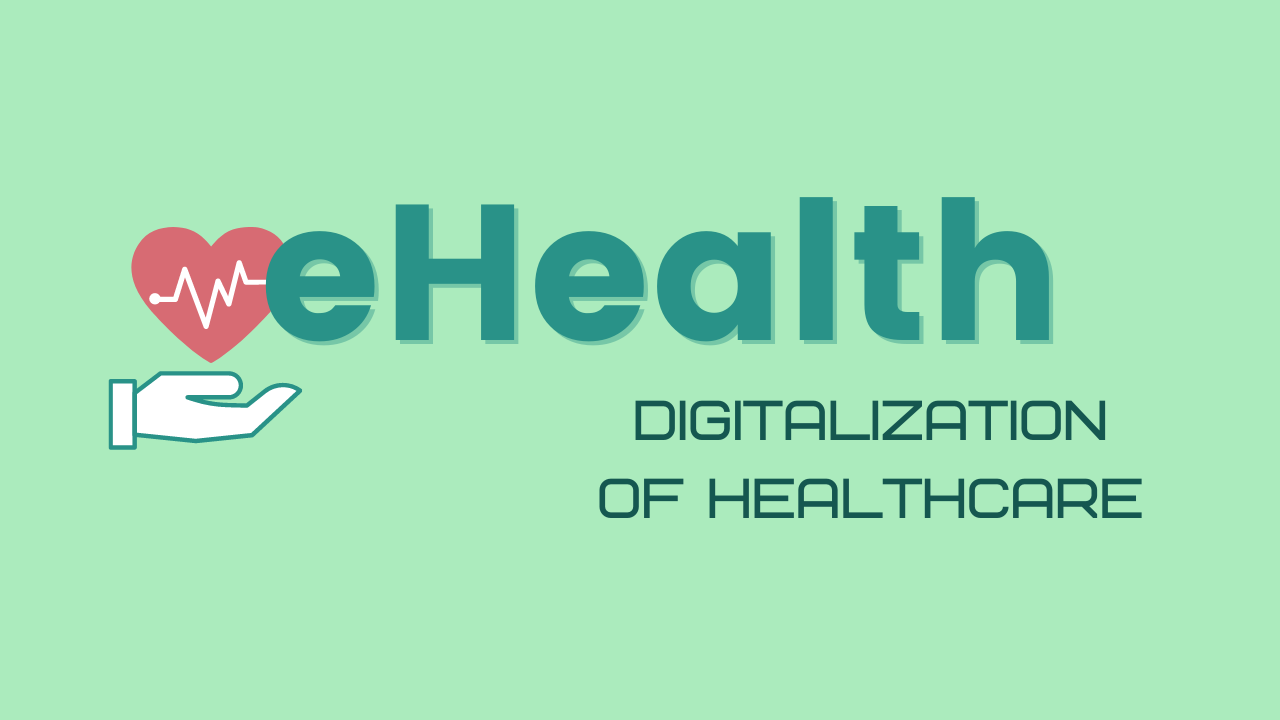
eHealth
Overview
eHealth, also known as electronic wellbeing or healthcare technologies, refers back to the use of Digital communication and data technology from the healthcare sector. It encompasses a wide range of technologies and purposes geared toward increasing the efficiency, efficiency, and quality of healthcare supply.
Objectives of eHealth
The key targets of eHealth may be summarized as follows:
Improved Use of Health care: By leveraging digital technologies for example telemedicine and distant patient monitoring, eHealth aims to enhance entry to Health care services for individuals living in remote regions or with confined mobility.
Enhanced High quality of Care: By way of applications like Digital well being information (EHRs) and medical determination guidance devices (CDSS), eHealth seeks to improve the standard of treatment by facilitating exact and well timed information Trade among healthcare professionals.
Affected person Empowerment: By offering sufferers with entry to their health care data, personalised wellness apps, and on-line educational resources, eHealth empowers individuals to take an active job in running their own health.
Cost Performance: Making use of digital platforms might help decrease administrative costs connected to paper-dependent programs although enabling efficient coordination between distinctive stakeholders in the healthcare ecosystem.
Key Apps of eHealth
Numerous important purposes lead to reaching the targets outlined earlier mentioned:
Electronic Health Information (EHRs):
EHRs are electronic versions of patients' professional medical information that can be quickly accessed by authorized Health care companies linked to a individual's treatment. They supply an extensive check out of the individual's medical historical past, lab success, drugs prescribed, allergy symptoms, and also other relevant medical details.
Telemedicine:
Telemedicine requires offering healthcare remotely by way of online video conferencing or cellphone phone calls. It enables Medical professionals to refer to with patients who are not able to bodily go to hospitals or clinics as a result of geographical constraints or mobility challenges.
Mobile Overall health (mHealth) Applications:
mHealth applications are smartphone applications that supply several Health care solutions, for example monitoring critical signs, reminding sufferers to acquire remedies, supplying entry to overall health education and learning elements, and facilitating interaction with Health care vendors.
Distant Patient Monitoring (RPM):
RPM enables healthcare specialists to watch a individual's very important signals and various health parameters remotely utilizing wearable gadgets or sensors. This enables early detection of health issues and timely interventions.
Health Information Trade (HIE):
HIE consists of the safe sharing of individual info across various healthcare corporations, making sure seamless coordination and continuity of treatment among companies in different configurations.
Scientific Determination Assist Techniques (CDSS):
CDSS leverage artificial intelligence algorithms to investigate clinical knowledge and aid healthcare industry experts in generating evidence-centered selections with regards to diagnosis, procedure options, drug interactions, and a lot more.
Wellness Wearables:
They are wearable equipment like Exercise trackers or smartwatches that will collect physiological facts on a person's exercise routines, coronary heart rate styles, sleep high-quality, and a lot more.
Benefits of eHealth
The adoption of eHealth gives quite a few Positive aspects for each persons and the overall Health care system:
Improved Performance: eHealth streamlines administrative duties by lessening paperwork and enabling the electronic Trade of data amongst stakeholders linked to affected person care.
Increased Communication: Digital health and fitness resources aid effective communication among clients and their healthcare suppliers though also advertising collaboration between different specialists associated with a client's treatment program.
Use of Specialised Treatment: Telemedicine enables sufferers residing in distant read more parts or underserved communities to refer to with professional Medical doctors who will not be bodily current close by.
Well timed Interventions: By way of distant checking units or cell applications that provide alerts or reminders for medication adherence or adhere to-up appointments, eHealth aids avert difficulties by facilitating early interventions.
Enhanced Client Results: By giving effortless usage of medical information on-line in addition to customized wellness assistance, eHealth empowers individuals to actively engage in their very own healthcare and manage chronic conditions proficiently.
Troubles and Worries
Even though the implementation of eHealth includes many benefits, it also offers troubles and worries that have to be addressed:
Privateness and Safety: Guarding patient details from unauthorized entry is a substantial concern from the digital health landscape. Strong safety steps, compliant with appropriate privacy restrictions, have to be implemented to guarantee info confidentiality.
Interoperability: Different healthcare units and programs may well not constantly seamlessly communicate with each other due to deficiency of interoperability requirements. Guaranteeing effective Trade of data across platforms is very important for extensive affected individual care.
Electronic Divide: Not everyone has equal usage of digital technologies or possesses the mandatory digital literacy capabilities demanded for making use of eHealth applications successfully. Bridging the electronic divide becomes important to make sure equitable access to healthcare expert services.
Regulatory Compliance: The dynamic mother nature of technological know-how often surpasses current regulatory frameworks. To totally leverage some great benefits of eHealth although safeguarding client legal rights, regulations want to help keep rate with technological advancements without having stifling innovation.
Conclusion
eHealth plays a pivotal purpose in modernizing Health care supply by harnessing technologies for improved accessibility, good quality of care, individual empowerment, and value effectiveness. The common adoption of Digital interaction applications, telemedicine services, mobile well being apps, remote monitoring methods, along with other modern remedies contributes in direction of a more connected and patient-centered approach to Health care provision. Having said that, addressing worries connected to privateness defense, interoperability expectations compliance bridging inequality gaps in Net accessibility are essential measures toward achieving the entire opportunity of eHealth.